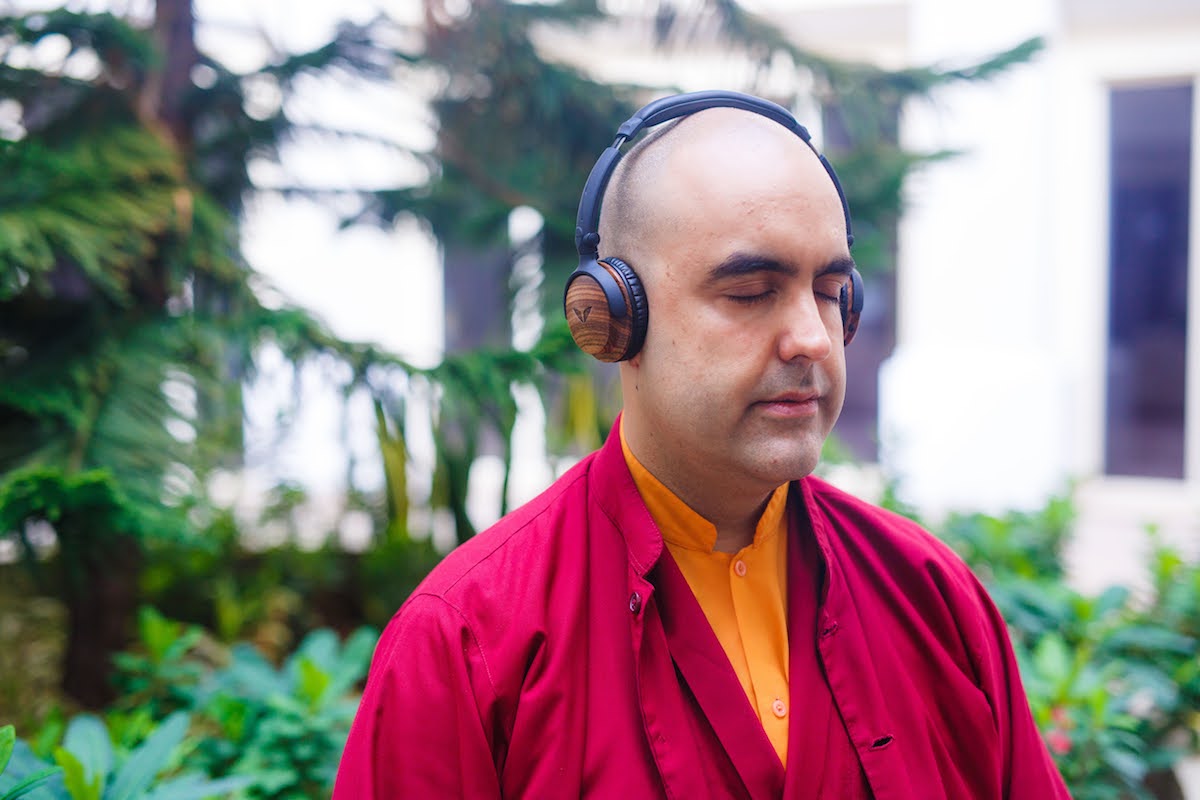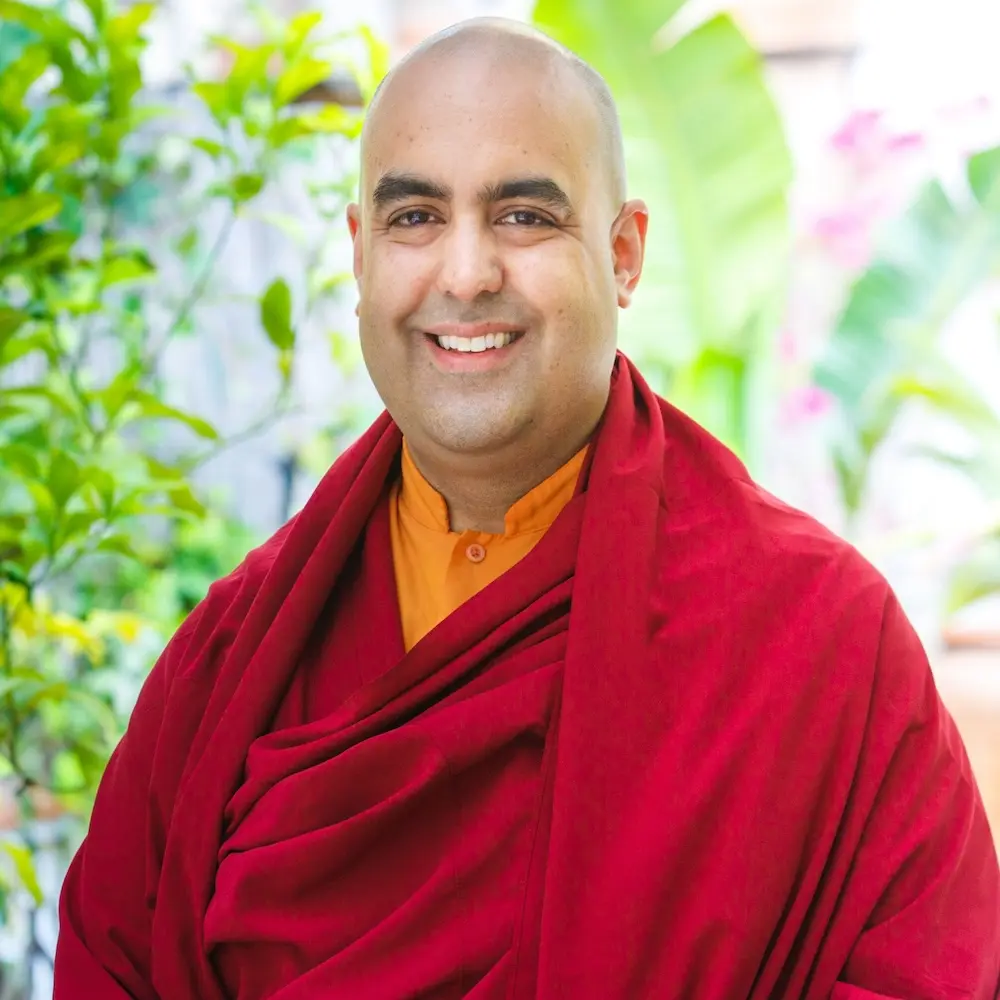Steve Jobs, Allen Ginsberg, and George Lucas are just a few public figures on the list of famous celebrities who know how to practice Buddhism. Do they practice it? That’s another question.
One of the interesting things about practicing Buddhism is its emphasis on meditation and mindfulness. No wonder it can be so beneficial for a modern human being, especially at this point in our evolution.
But before you start practicing Buddhism, it’s essential to understand the values and beliefs of this enlightening religion.
Why? Because this doctrine is one of the paths to enlightenment, and there are many more. And it’s up to you to decide which road will lead you to your unique heaven.
What is Buddhism?
Buddhism is a spiritual tradition founded by Siddhārtha Gautama, who later became known as the Buddha more than 2,500 years ago in India.
Initiated as a faith, it has grown into one of the major world religions, historically most prominent in East and Southeast Asia, with a growing influence in the West.
What does Buddha mean?
The word “buddha” stands for “awakened” in Sanskrit. The Buddha, as a title, means “The Awakened One.”
In the most common perception, the Buddha is the man who founded Buddhism. But it’s incorrect, as Siddhārtha Gautama wasn’t the only Buddha out there.
In fact, there are branches of Buddhism that believe anyone can become a Buddha—a person who’s able to see the world with eyes unclouded by judgment or bias. You, too, by learning how to practice Buddhism, can awaken to the nature of reality and become free from suffering.
Is Buddhism monotheistic?
Monotheistic religions believe in the existence of only one god and creator. Polytheistic religions believe in the existence of many gods and deities, often belonging to a divine pantheon. Buddhism is neither.
Instead, Buddhism is a nontheistic religion, which means that Buddhism has no official god or deity. And here’s why:
The Buddha was a man called Siddhārtha Gautama. He was born in Lumbini, Nepal, between 563 and 480 BCE. When he saw the violence, sadness, and selfishness around him, he vowed to find a way to end human suffering.
After studying with many sages, gurus, and ascetics, he sat beneath a Bodhi tree. And after 49 days of intense meditation, he rose, enlightened, and eager to share his newfound spiritual understandings.
While Siddhārtha Gautama did become The Buddha, he was not a god. He made no claims to divine origins or powers. He was just a mortal man who wanted to share his ideas with anyone who would listen.
What are the different types of Buddhism?
There are various types of Buddhism, as with many major religions.
The Buddha’s teachings were interpreted in different ways; over time, those interpretations became the branches of Buddhism.
Here are seven main types of Buddhism practiced across the world:
- Theravada Buddhism
- Mahayana Buddhism
- Vajrayana Buddhism
- Zen Buddhism
- Thai Forest Tradition
- Nichiren Buddhism
- Pure Land Buddhism
The oldest and most prominent schools are Theravada and Mahayana.

Buddhism beliefs
Although there are multiple branches of Buddhism, their beliefs boil down to three core tenets: the Four Noble Truths, the Noble Eightfold Path, and the Five Aggregates.
These are the basics of Buddhism and are universally followed by Buddhists around the world. Let’s look at each tenet.
The Four Noble Truths
These truths are believed to be the first teachings given by the Buddha. They are considered noble because they are real, infallible, and do not change. In other words, they are central and universal events, existing at all times and in every space.
These are:
- All beings experience pain and misery during their lifetime: “Birth is pain, old age is pain, sickness is pain, death is pain; sorrow, grief, sorrow, grief, and anxiety is pain. Contact with the unpleasant is pain. Separating from the pleasant is pain. Not getting what one wants is pain. In short, the five assemblies of mind and matter that are subject to attachment are pain.”
- The origin of pain and misery is desire (craving): “It is the desire that leads to rebirth, accompanied by pleasure and passion, seeking pleasure here and there; that is, the desire for pleasures, the desire for existence, the desire for non-existence.”
- The end of pain and misery can be achieved by ending desire (craving): “With the complete non-passion and cessation of this very desire, with its abandonment and renunciation, with its liberation and detachment from it.”
- There is a path we can follow to put an end to suffering: “The method we must follow to stop pain and misery is that of the Noble Eightfold Path.”
These truths only exist in our body, declared by the Buddha as “the world of pain.” In essence, as long as you have the body, you will have desires that cause human suffering.
Does it mean we are condemned to pain and suffering? No, it doesn’t.
According to the Buddha, there’s a way to stop it. It’s called the Noble Eightfold Path.
The Noble Eightfold Path
It’s the path out of suffering that enables you to overcome your ego. It’s presented with eight rays depicting eight principles, or right steps. “Right” suggests that you see things as they are and not as you would like them to be.
The principles are the following:
- Right view: Right understanding of the Four Noble Truths
- Right thought: Engaging in selflessness and lovingkindness in your thoughts
- Right speech: Speaking without verbal abuse, lies, hatred, or blame
- Right action: Abstaining from murder, sexual misconduct, and theft
- Right livelihood: Engaging in work that fulfills you and helps others
- Right effort: Practicing the Noble Eightfold Path consistently
- Right mindfulness: Observing the patterns of your body, mind, and the world around you without judgment
- Right concentration: Practicing meditation regularly
These eight principles are the steps on the noble path towards liberation from pain. They are all indispensable for the path, so you can’t leave out any of them.
The Five Aggregates
The five aggregates are the elements that make up human existence and human personality.
Think of them as your five sense organs plus the mind: eyes, ears, nose, tongue, body, and mind. Though we experience our reality through them, we aren’t what we see, hear, sense, smell, touch, or perceive.
You can also interpret these five aggregates as five factors creating human desire (craving). When you can separate yourself from them by understanding their fleeting nature, you can transcend your pain.
The five aggregates of Buddhism are:
- Form, physical matter: It’s anything material with solidity, fluidity, heat, and motion, and their derivatives, which can be experienced through your eyes, ears, nose, tongue, and body as a visible form, sound, odor, taste, and tangible sensations.
- Sensation, the sensory experience of an object: These are the physical or mental sensations you experience through your five sense organs and the mind. As for the latter, intellect is considered a sense organ through which you experience ideas or thoughts.
- Perception, the mental labeling of sensory experience: It’s your capacity to recognize things by associating them with what you already know.
- Mental formation, biases, prejudices, interests, attitudes, and actions: All volitional actions (consciously chosen by you). They are associated with karma, as all volitional acts create one.
- Consciousness, awareness of physical and mental processes: It’s pure awareness resulting from the intersection of your organ and an object. Unlike mental formation (the fourth aggregate), it doesn’t form opinions of the object.
The skandhas might not make much sense to you at first glance. Even inveterate Buddhist practitioners meditate on these individual elements to fathom them and be able to separate themselves from their prejudices.
By doing this, they can draw closer to the state beyond suffering. By learning how to practice Buddhism you, too, can move beyond your pain with the right principles.
What are the five rules of Buddhism?
- Pāṇātipātā veramaṇī sikkhāpadaṃ samādiyāmi: “I undertake the training-precept to abstain from the onslaught on breathing beings.”
- Adinnādānā veramaṇī sikkhāpadaṃ samādiyāmi: “I undertake the training-precept to abstain from taking what is not given.“
- Kāmesumicchācāra veramaṇī sikkhāpadaṃ samādiyāmi: “I undertake the training-precept to abstain from misconduct concerning sense-pleasures.”
- Musāvādā veramaṇī sikkhāpadaṃ samādiyāmi: “I undertake the training precept to abstain from false speech.“
- Surāmerayamajjapamādaṭṭhānā veramaṇī sikkhāpadaṃ samādiyāmi: “I undertake the training-precept to abstain from alcoholic drink or drugs that are an opportunity for heedlessness.”
Can a Buddhist drink?
The fifth rule of Buddhism states that a traditional Buddhist is not allowed to drink alcohol.
The Buddha made this rule when a monastic drank too much palm wine and passed out in public. This display of overindulgence made the Buddha declare that alcohol causes carelessness. And the fifth rule of Buddhism was born.

How to practice Buddhism daily
Compassion (or loving-kindness) is one of the highest virtues of Buddhism across all branches. Although this state of mind refers to one’s aspiration to free others from suffering, it starts with self-compassion.
Buddhism says it’s even greater than love when seen as desire. It allows you to cultivate inner peace and is based on transcendental wisdom.
Compassion is the sense of heart expansion, connecting with all sentient beings. It’s the sense of something limitless and unconditional, something pure.
— Gelong Thubten, trainer of Mindvalley’s Becoming More Loving program
In essence, when you aspire to practice Buddhism, you must practice compassion through daily meditation and mindfulness.
Here are five ways to practice Buddhism daily:
1. Cultivate a kind heart
As soon as we wake up, we become self-centered. It’s the very nature of your mind to start thinking about your day, where everything revolves around you alone.
Instead, you want to shift your focus to being of service and benefit to others.
You can start your day by thinking, “Today, I will try to serve others. I want to do all actions so that others can attain the happiness of enlightenment.”
2. Find time to meditate and box it in your calendar
Do you have time to watch Netflix or YouTube? Do you have time to scroll through your social media? If you do, then you can find time for meditation.
To train your mind to treat your meditation practice as a high priority, you want to timebox it in your calendar as you do it with your important meetings.
If you are a beginner, the first step is to develop a sense of tranquility through meditation and breathing to prepare your mind for more profound meditation.
In this video, Gelong Thubten, a Tibetan Buddhist monk and the trainer of Mindvalley’s Becoming More Loving program, talks about the power of meditation and how you can incorporate it into your daily life.
3. Cultivate mindfulness
Mindfulness is the antidote to living on autopilot. It entails being aware of your thoughts, feelings, words, and actions each moment. It also includes being mindful of your ethical values and having a kind heart so that you can live accordingly.
According to Kristina Mänd-Lakhiani, co-founder of Mindvalley and trainer of Mindvalley’s Live By Your Own Rules program, the habit of living a conscious life can affect every single area of your life, and building up this habit is an ongoing process.
“As long as you notice what you do and why you do it, it’s more than enough to transform your life over time,” she adds.
So the simple way to cultivate mindfulness is to start being mindful of your daily habitual tasks. For example, when you brush your teeth, you want to be fully aware of every movement of your body and bodily sensations during this activity.
You can apply this practice to household chores like laundry, dishes, setting the table, or cooking.
4. Be mindful of interdependence
This practice implies becoming aware of your interconnectedness with others and more mindful of your interactions with your environment.
When you realize that you live in an interdependent world, you become responsible for your actions affecting others and the planet you dwell upon.
It entails living in sustainable ways that minimize pollution and waste.
5. Forgiveness
You can’t develop compassion without forgiveness. As Gelong Thubten puts it, learning how to forgive those who wronged you is the pinnacle of compassion training.
He explains that forgiveness starts with your intention to move beyond your resistance and self-centeredness.
“What stops us from feeling forgiveness is that we get locked down in the feeling of resentment. We can’t let go of that hurt. And it becomes addictive when you hold on to that pain,” he adds. “Also, some people see compassion as weakness. But it’s truly a power.”
So it’s essential to reframe compassion and see it as your gateway to inner peace and freedom from the past.
God has sent you nothing but angels — everyone who has come in your life and done something to wrong you — you can choose to perceive that as an angel doing something to get you to the next level of your evolution.
— Vishen, founder of Mindvalley
On top of the spiritual benefits, learning how to practice forgiveness can help reduce feelings of tension, anger, depression, and fatigue.
So where you you start? Try The 6 Phase Meditation Method, where the third phase of this meditation focuses solely on forgiveness.
Moving from religion to responsibility
Modern mystic and trainer of Mindvalley’s A Yogi’s Guide to Joy program, Sadhguru, sees his mission as helping people move from heaven to earth, from religion to responsibility.
He explains that it doesn’t mean irreverence toward religions. It only means that the way you experience your life is determined from within.
In other words, if you choose what happens within you, you can choose the highest level of happiness, de-conditioning yourself layer by layer, one step at a time.
This is what Mindvalley’s spiritual programs—Becoming More Loving with Gelong Thubten, Unlocking Transcendence with Jeffrey Allen, A Yogi’s Guide to Joy with Sadhguru, Awaken the Species with Neale Donald Walsch—are about. They’re helping you become awakened to living your best life, and inspire others to do the same.
And with the free Mindvalley access, you’ll be able to view sample classes of these transformational programs.
Welcome in.









